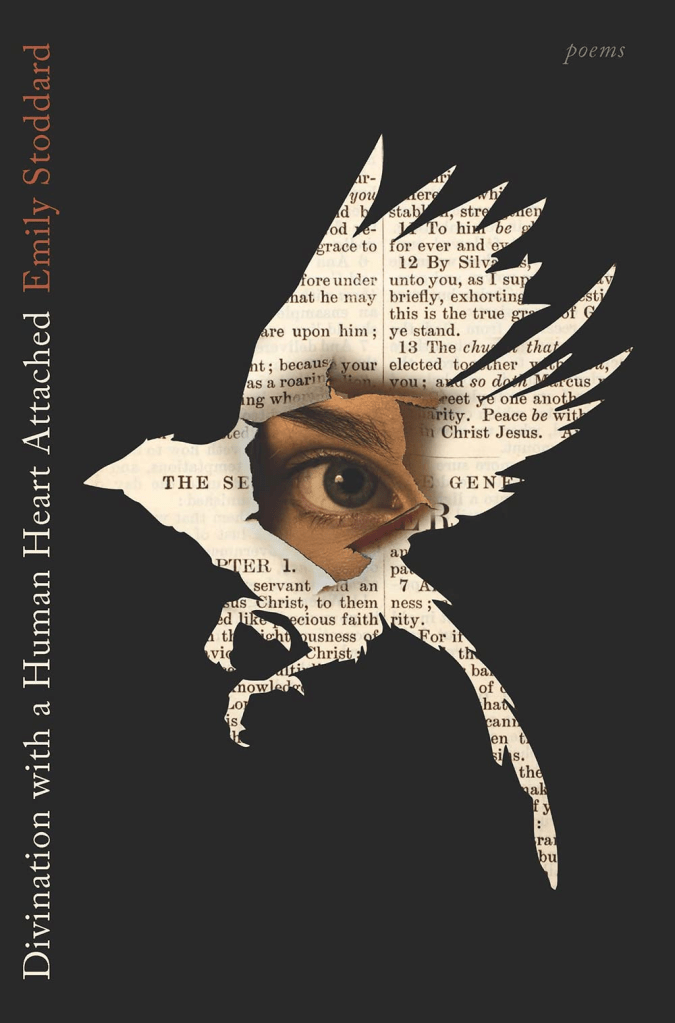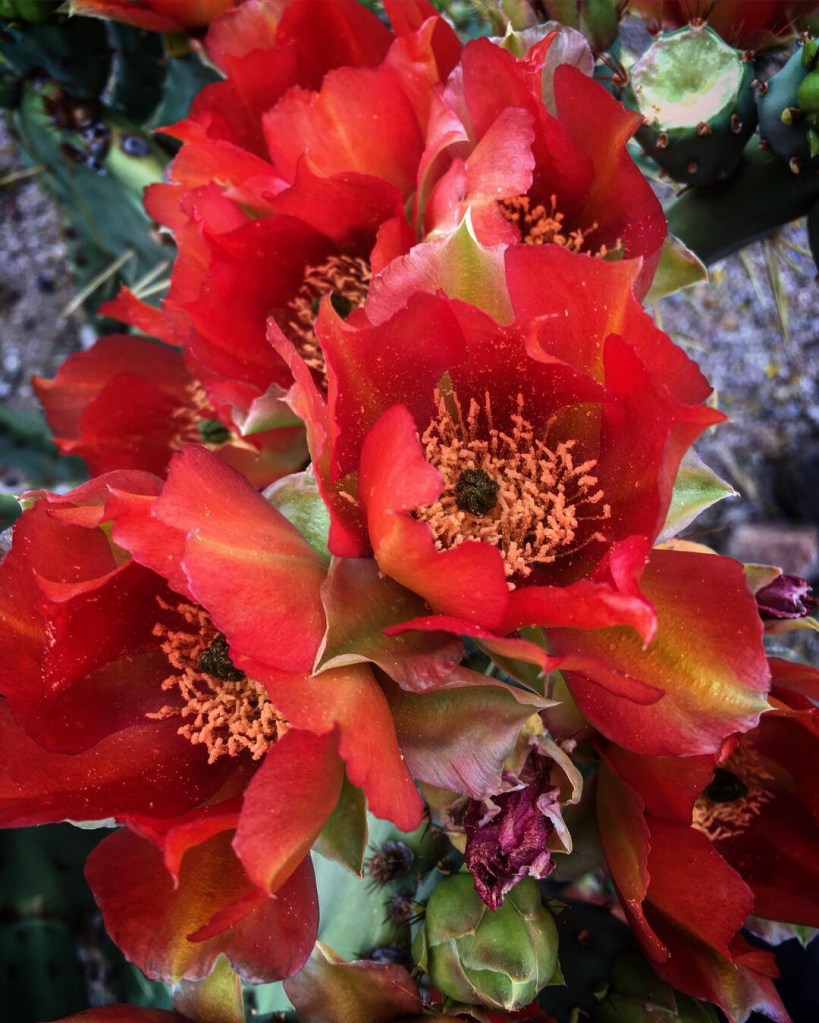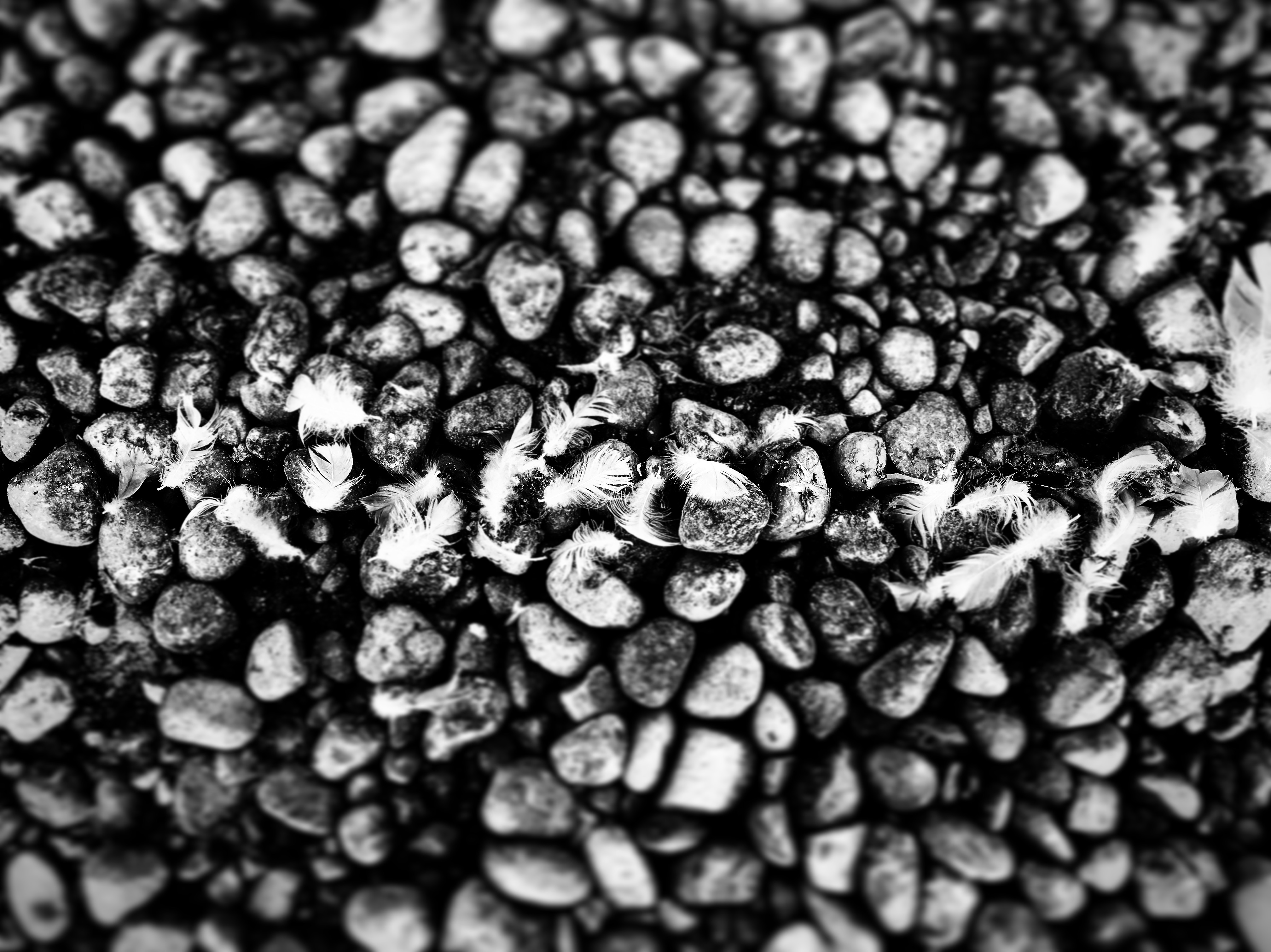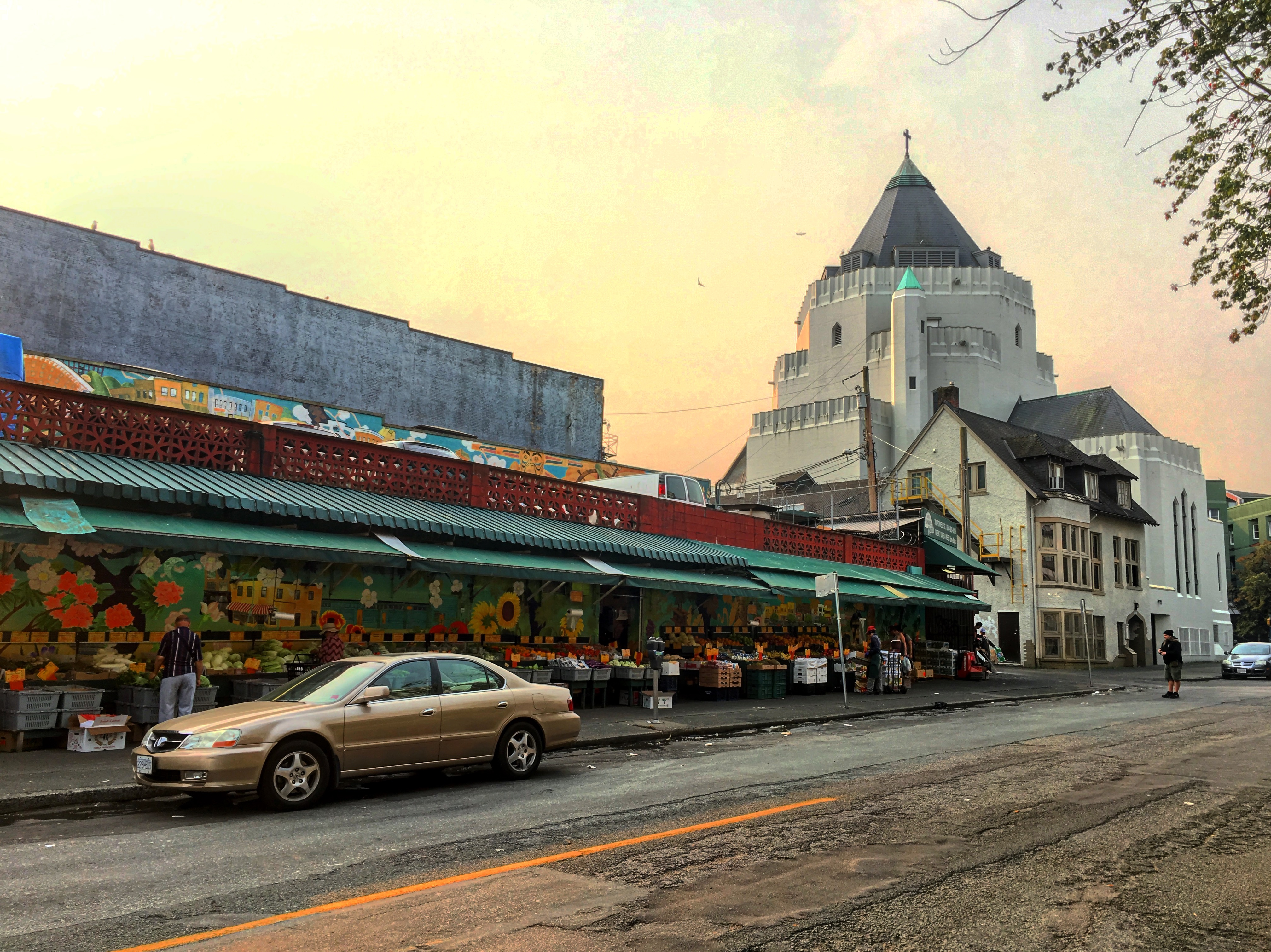A short review of Adam Miller’s excellent book Original Grace: An Experiment in Restoration Thinking.
Prelude
The Church of Jesus Christ of Latter-day Saints (LDS) seems to have a grace problem. Like almost all Christian denominations in North America and Europe, the LDS Church has struggled in recent years to retain young people and progressives. Though the LDS Church’s support for conservative social issues will continue to be a point of tension for many, LDS philosopher Adam Miller’s Original Grace is an attempt to experiment with “Restoration Thinking” in order to affirm a core Christian doctrine to LDS spiritual practice: Grace. His research question: What happens when Justice and Grace are not seen as oppositional? His hypothesis: It changes everything.
Raised in the LDS church, but leaving in my late 20s, I have had my eye on Miller’s Zen-infused prose for a while. This is because Miller has wrestled with one of the issues that led me away from LDS practice and toward a more contemplative expression of Christianity. As an LDS person there was a grace-shaped hole in my life that I didn’t even know was there, but after suffering through deep depression during my mission years, mostly because of my own feelings of unworthiness, grace found me, and I began to believe that my status as a creature of God came before my actions or behaviors. In his boldly titled Future Mormon (2016), Miller’s essay ‘A General Theory of Grace’ simply states: “Grace is Original.” In this short review, I want to commend Adam Miller for his book length elaboration on that sentence and raise some questions for his ongoing experiment with a doctrine that has yet to find a comfortable place at the table of LDS spiritual practice.
Miller’s Radical Justice
Original Grace is a touching tribute to Miller’s late father, a disciple of Christ whose strongest theological proof of God’s existence was the self-giving love he felt all around him. For Miller, his father taught him that Justice and Mercy were always on the same team.
Central to Adam Miller’s claim is that the doctrine of Original Sin, a doctrine that the LDS church has negated since its ‘13 Articles of Faith’ were published in 1842, has nonetheless tainted the way LDS people live their understanding of the Gospel.
Despite LDS religious culture’s rejection of the austere Calvinist doctrine of “total depravity”, and its dismissal of Sola Fide (faith alone) soteriology, faithful LDS have nevertheless absorbed the idea that true justice justifies, at least in theory, the necessity of punishment for sin. That falling short of the Gospel merits our feelings of guilt and shame and that only by redoubling our efforts to be righteous will we come to our salvation.
LDS have often seen justice as a kind of divinely anointed karma: They, along with some other Christian lineages, intuitively believe the proposition that humans suffer because we deserve it. The Old Testament’s admonition of an eye for an eye is often described as a bridle for vengeance within a proportional tit for tat. The Hebrew imagination saw justice as restoring right relation among peoples, castes, land and God, and this certainly included God’s punishment of Israel’s enemies or those who strayed from Torah. Diseases, plagues and natural disasters were often interpreted as God’s justice playing out in the world (See 1 Chronicles 21:14).
Miller doesn’t negate the goodness of the law, but with LDS Apostle Dallin H. Oaks claims that Christ offers a better way. Miller asserts that this better way is to align justice with grace by returning not only good for good but also good for evil. This is a play taken directly from Jesus of Nazareth’s Sermon on the Mount. For Miller, in a Christian cosmos, suffering can never be deserved, only learned from and wrestled with.
Miller shares that as a missionary he constantly fought feelings of inadequacy and unworthiness. That is until he picked up Stephen Robinson’s 1992 Believing Christ. Robinson diagnoses the problem in his own spouse, who after working hard to be the perfect LDS woman collapses into a pile of defeat and despair. She accepted that her efforts would never be enough to merit the full measure of LDS salvation. Robinson takes the whole of the church to task on her behalf for refusing to believe that Christ means what he says and did what he did.
Robinson’s theory of the atonement is not so much of substitution, Jesus suffers on our behalf, but of being saved “after all you can do” (See 2 Nephi 25:23). To illustrate this Robinson shares ‘The Parable of the Bicycle’ wherein a little girl scrimps and saves for a bicycle for weeks, but still falls short, even after all her hard work. The loving father steps in and pays the rest. Grace, after all we can do.
Miller lauds Robinson’s first step, but argues that this “after thought” or “backup plan” soteriology still does not fully grasp the radical claim grace has upon us. When grace and justice are aligned, they ask not what we deserve, but what we need. Sin in this understanding is not a law broken, but grace rejected. Miller writes, “The problem isn’t that God is unwilling to offer the grace I need. The problem is that I’m unwilling to receive the grace God is giving” (14).
LDS tend to think that salvation is the highest reward for living a righteous life, rather than seeing righteousness as the fruit of our embrace of the saving (salving) love of God. The commonly quoted LDS scripture Doctrine and Covenants section 82 reads: “I, the Lord, am bound when ye do what I say” is an underlying motivation for an LDS version of the prosperity Gospel, an esoteric incantation that extracts blessings from a God of justice. It is Max Weber’s Protestant Work Ethic liberated from Calvin’s total depravity. Strange bed fellows indeed.
Miller admonishes LDS that salvation is better sought and understood as a present-tense reality. “A shared life lived in Christ’s presence is the end. It is salvation” (20). Christian virtues like charity are what grace looks like in human clothing, not what Christians do to impress God, whose grace is the very air we breathe (37-38). He writes, “If we take Jesus’s Sermon on the Mount as our guide, the logic of justice is the logic of grace” (37). Thus, no instance of a karmic approach to justice in scripture can dissuade Miller from seeing justice as an expression of how to arrive at what human beings need rather than what we deserve. The Bible is not after all a story of justice executed judiciously in each case, it is a story about a thousand broken promises met by a God who loves us as a nursing child at his breast.
Grace and Nature
Perhaps because the book is tailored to a general audience, and went through the editing filters of Deseret Book, the LDS publishing house, I found myself wanting Adam to weave in threads of the “Traditional Christianity” he is partly polemicizing against. I found the lack of historical context for Original Sin or Grace for that matter a weakness of the initial chapters, even if the book is aimed to keep folks from slogging through the theological mud. In addition, I found that his work of aligning justice with grace was more successful than his case against Original Sin. A brief discussion of what I mean.
First, a bit of background on the doctrine of Original Sin: This core doctrine is found at the heart of all Christian communions: Oriental Orthodox, Eastern Orthodox, Roman Catholic, Anglican, Lutheran, Calvinist, Anabaptist, Pentecostal and Evangelical. The theology claims that our mortality entails a proclivity to sin by nature.
This theology is primarily absorbed from the second account of Adam and Even in the Garden found in Genesis 3, wherein eating of the fruit of the Tree of Knowledge of Good and Evil results in the couple being expelled from the Garden of Eden. However, the doctrine also draws from the poetry of Psalm 51 where the poet writes, “Behold, I was shapen in iniquity; and in sin did my mother conceive me” (KJV). In the letter of Paul to the Romans (Ch. 5), he claims that if death came to humanity through one person (Adam), salvation most certainly could as well (Jesus).
However, Original Sin does not appear in Jewish theology. It was Saint Augustine of Hippo (354–430) an early Church Father who really solidified the doctrine. Augustine had a sudden and unexpected conversion to Christianity at the age of 31. His own riotous past convinced him that human beings are utterly dependent on God’s grace.
Miller’s only mention of non-Mormon theology is his mention of the theology of John Calvin, the 16th century French reformer whose understanding of faith meant that unlike the sacramental approach of the Catholic and Orthodox communions, no rite, ritual or sacrament was effective in ensuring our salvation. Not even an act of faith could save us. Our natures are totally depraved of the good, we are utterly and completely dependent on God’s grace. Our election is only made known to us through our desires to live a Christian life, or through the fruits of that life. The Westminster Confession, the current articles of faith of the American Presbyterians, continues to affirm that humans are: “Wholly defiled in all the parts and faculties of soul and body.” [1] Original Sin indeed. Interestingly, the Catechism of the Catholic Church reads:
“It is a sin which will be transmitted by propagation to all mankind, that is, by the transmission of a human nature deprived of original holiness and justice. And that is why original sin is called “sin” only in an analogical sense: it is a sin ‘contracted’ and not ‘committed’—a state and not an act.”[2]
In other words, human nature is wounded, but not totally depraved. The notion of an LDS human nature (which tends to be more optimistic) is never fully resolved by Miller who writes:
Christ’s atonement directly addresses a problem internal to my own nature as a sinner, not a problem internal to God’s nature. He bridges a gap caused by my rebellion against justice and grace, not a gap between God’s justice and God’s grace (59).
In all Christian readings, even LDS, my nature as a sinner comes through contraction, I have inherited my nature as a sinner. LDS do not appear to believe that our nature as sinners goes all the way back into the LDS pre-existence. Another option is that sin comes into the world only when we chose to sin. There is no pre-existing conditions, only a long string of spiritual lifestyle choices that our natures are vulnerable to slipping into.
When Miller says that his nature is as a sinner, he seems to be implying then that our sinful nature is contracted through our humanity and understood through the myth of Adam and Eve as the parents of our humanity. While this theory of sin feeds the logic of karmic justice Miller critiques, it is also at the center of his theology of grace, which does not presume to merit God’s grace, only strives to be a receptive vessel for it.
The LDS Church’s Palagian Problem
This leads to another bit of historical context. The rejection of Original Sin in the Christian tradition has tended to be by those who embrace the idea that we can earn our salvation. For example, Pelagius (c. 355 – c. 420 AD) a British monk, asserted that Original Sin did not taint our nature because our nature was synonymous with being, and being is sacred. Pelagius was one of the early Christians who demanded strict moral obedience for all Christians, especially priests. Pelagius’s view was quite popular in the 5th century, before Augustine’s Original Sin rose to the status of dogma. His notion of free will (free agency) suggested that God would not command us to be perfect (Matthew 5:48) if it were not possible. And God didn’t create anyone to be evil, this was a Manichean (dualist, gnostic) doctrine. However, after a public run in with Augustine, Pelagius’s ideas were condemned primarily at the councils of Carthage between 411–418 CE.
Miller’s challenge going forward is that Mormonism’s rejection of Original Sin is in my view primarily a Palagian move. This is evidenced, not just in many LDS’ embrace of the Prosperity Gospel, but in the persistence of certain folk theologies that come from Joseph Smith Jr.’s later revelations. For example, Miller uses the word “Creation” in the book but does not clarify whether he also rejects the Ex Nihilio (out of nothing) Creation of “traditional Christianity”. LDS tend to talk about creation as an activity of organization overseen by a certain Celestial precinct’s God, in earth’s case Jesus Christ out of existing matter. Many LDS believe that our pre-mortal selves participated in that organization, a beautiful thought for some, but also a move that steals something of the grace at the heart of what it means to be a Creature. These two rejections: Ex Nihilo and Original Sin seem to leave the possibility of embracing grace less likely. Rather, embracing the strong contingency of my existence that ex nihilo creation asserts, and my nature as a sinner that original sin canonizes, leaves me prone to the radical beauty of God’s grace.
Other Braids in the Estuary of Grace
Before I conclude, I would like to point readers to several other worthy explorations of grace-centered Christianity which flow in the same direction as Miller’s.
1) The Franciscan Alternative Orthodoxy
The Franciscan Order, founded in 1209, has since the writings of Duns Scotus (1265/66-1308), asserted a minority position on the Incarnation (the doctrine that God took on a human form/nature). Since Scotus, Franciscans have asserted that rather than a ransom, or substitutionary approach to salvation, which is predicated on the inevitability of sin, Franciscans assert that Incarnation has been part of God’s plan from the beginning. Contemporary Franciscan teacher Richard Rohr likes to say that God becomes what he saves, and the Incarnation was not just a single event in Jesus of Nazareth, but an ongoing event from the beginning (See John 1).
2) Matthew Fox’s Original Blessing
In 1997, Dominican Friar Matthew Fox wrote a book entitled Original Blessing. His book proves that Roman Catholicism has just as deep a wound related to Original Sin as the LDS Church. The book got him excommunicated by Cardinal Ratzinger. In the book, Fox emphasizes the many affirmations of the goodness of creation in Genesis 1 that preceded the sin of Adam and Eve that saw them exiled from the garden. While I don’t find Fox’s scholarship all that impressive or well-disciplined, his assertion that the interpretation of Original Sin needs a complete overhaul, was well received with progressive Christians, especially those interested in ecological theology.
3) The Neo-Celtic Christianity of John Phillip Newell
A former pastor in the Church of Scotland, John Phillip Newell has sought to amplify the teachings of the Church in the British Isles before the Roman standardizations of the 6th century. While he calls his Christianity Celtic, it is more accurately classified as a kind of Neo-Celtic Christianity, which infuses pre-Roman Christianity with contemporary concern for equality, spirituality, feminism and environmental stewardship. Newell negates the Virgin birth and believes that Creation was not effected out of nothing, but out of God. He boldly claims that holding an infant is the best argument against the doctrine of Original Sin, a doctrine that he simplistically explains as primarily about imperial control and oppression of the masses. For Newell, Original Sin is psychologically damaging and makes up the core wound of Western Civilization, which leads to so much shame and self-loathing.
Conclusion
There are perhaps many more examples, but these writers sketch out the basic topography of the Christian interlocutors that Miller is in conversation with. Each of them emphasizes the primacy of grace as a bewildering gift, not a post mortal rewards package. I commend the razor-sharp prose of Adam Miller’s excellent book. Any discussion of grace is a balm to the common affliction of shame and guilt that justice-oriented approaches to religion too often take. And as Miller says, the LDS Restoration it isn’t finished.
[1] See Ch. 6, https://www.pcaac.org/bco/westminster-confession/
[2] Catechism of the Catholic Church, #404 https://www.catholicculture.org/culture/library/catechism/cat_view.cfm?recnum=624



 In this New Year, may we take the time to both be and become. May we drink of the rich beauty of this life with all the excitement of a fresh sapling. First, acknowledging the Author of all life, that loved us into being. And then, by doing something, even a small something, each day to care for the earth, the poor, the vulnerable and the weak and to stand for justice. May each day be a cup that overflows with goodness, charity and kindness. May we waste
In this New Year, may we take the time to both be and become. May we drink of the rich beauty of this life with all the excitement of a fresh sapling. First, acknowledging the Author of all life, that loved us into being. And then, by doing something, even a small something, each day to care for the earth, the poor, the vulnerable and the weak and to stand for justice. May each day be a cup that overflows with goodness, charity and kindness. May we waste 


